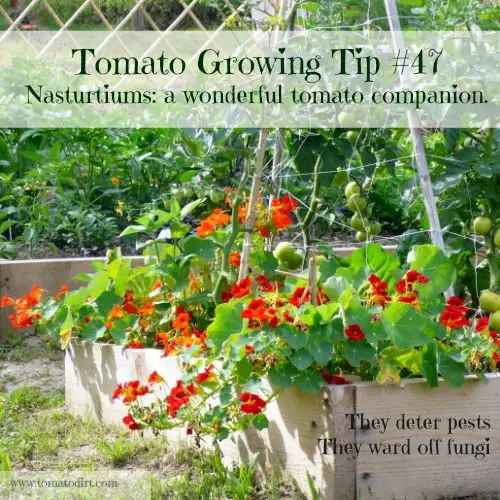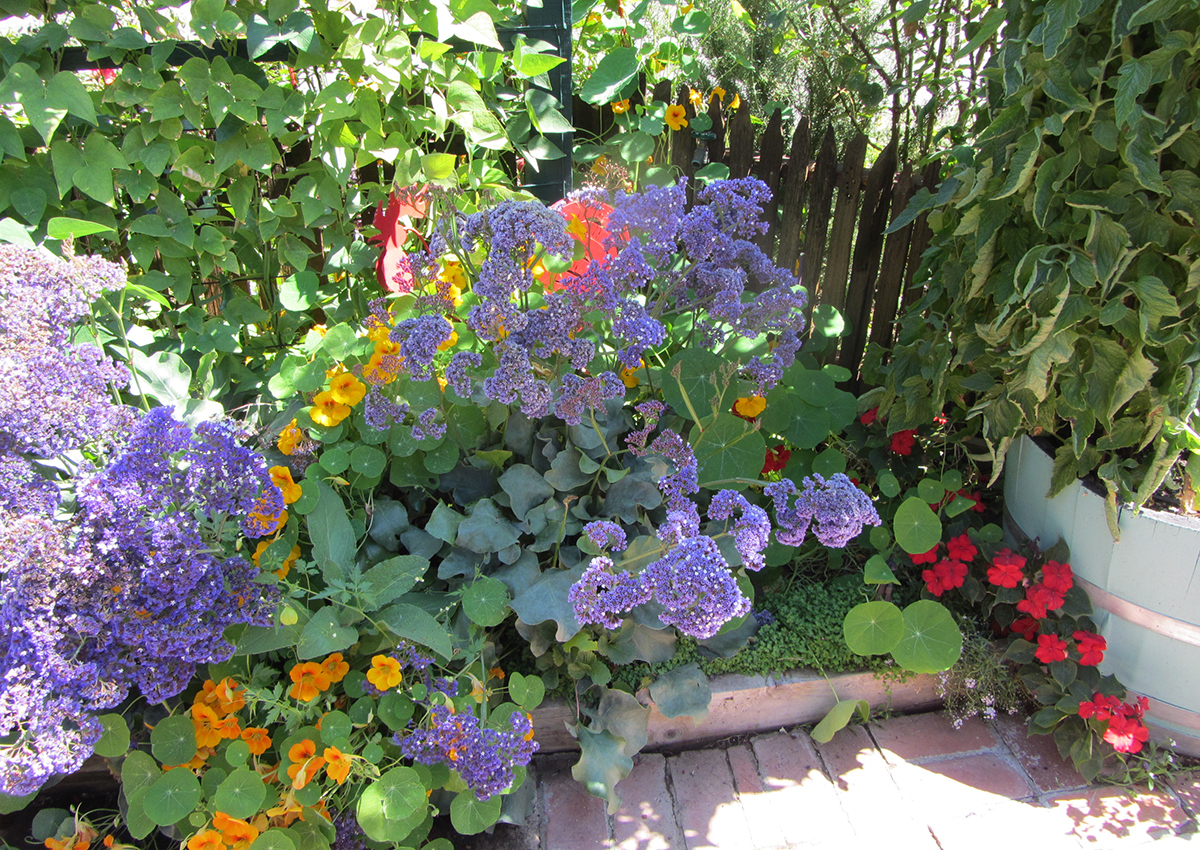The Ultimate Guide To Companion Planting With Nasturtiums
The Ultimate Guide to Companion Planting with Nasturtiums
Introduction
Nasturtiums are a beautiful and versatile flower that can be grown in a variety of settings. They are also a great choice for companion planting, as they can benefit a number of different plants.
In this guide, we will discuss the benefits of companion planting with nasturtiums, as well as some of the best plants to grow alongside them. We will also provide some tips on how to plant and care for nasturtiums in your garden.
Benefits of Companion Planting with Nasturtiums
There are many benefits to companion planting with nasturtiums. Some of these benefits include:
- Attracting pollinators: Nasturtiums are a favorite of pollinators, such as bees, butterflies, and hummingbirds. These pollinators help to pollinate other plants in your garden, which can lead to increased fruit and vegetable production.
- Reducing pests: Nasturtiums can help to repel a number of common garden pests, such as aphids, whiteflies, and squash bugs. This can help to keep your other plants healthy and pest-free.
- Improving soil quality: Nasturtiums are nitrogen-fixing plants, which means that they can help to improve the nitrogen content of the soil. This can benefit other plants in your garden, as they will have access to more nitrogen.
- Providing ground cover: Nasturtiums can be used to provide ground cover in your garden. This can help to suppress weeds and keep the soil cool and moist.
Best Plants to Grow with Nasturtiums
There are many different plants that can benefit from being grown alongside nasturtiums. Some of the best plants to grow with nasturtiums include:
- Brassicas: Brassicas, such as broccoli, cabbage, and cauliflower, can benefit from the pest-repelling effects of nasturtiums.
- Cucurbits: Cucurbitids, such as cucumbers, melons, and squash, can also benefit from the pest-repelling effects of nasturtiums. Additionally, nasturtiums can help to improve the flavor of cucumbers.
- Legumes: Legumes, such as beans and peas, can benefit from the nitrogen-fixing abilities of nasturtiums. This can help to improve the growth and production of legumes.
- Nightshades: Nightshades, such as tomatoes, peppers, and eggplant, can benefit from the pest-repelling effects of nasturtiums. Additionally, nasturtiums can help to improve the flavor of tomatoes.
How to Plant and Care for Nasturtiums
Nasturtiums are relatively easy to plant and care for. They can be planted in full sun or partial shade, and they prefer well-drained soil. Nasturtiums are not particularly fussy about soil conditions, but they will do best in soil that is rich in organic matter.
To plant nasturtiums, simply sow the seeds directly in the ground about 1/2 inch deep. Nasturtiums will germinate in about 1-2 weeks. Once the seedlings have emerged, thin them so that they are about 12 inches apart.
Nasturtiums are relatively drought-tolerant, but they will benefit from regular watering. They should also be fertilized every few weeks with a balanced fertilizer.
Conclusion
Nasturtiums are a beautiful and versatile flower that can be grown in a variety of settings. They are also a great choice for companion planting, as they can benefit a number of different plants.
If you are looking for a way to attract pollinators, repel pests, improve soil quality, or provide ground cover in your garden, then nasturtiums are a great option. With their bright colors and cheerful flowers, nasturtiums are sure to add a touch of beauty to your garden.
Nasturtiums are beautiful, edible flowers that can add a splash of color to any garden. But did you know that they can also help to deter pests and improve the growth of other plants?
That's right, nasturtiums are a great choice for companion planting. They can be planted alongside a variety of vegetables, including tomatoes, cucumbers, and brassicas. Nasturtiums help to attract beneficial insects, such as ladybugs and hoverflies, which prey on pests. They also help to repel aphids, squash bugs, and cucumber beetles.
In addition to their pest-deterrent properties, nasturtiums also help to improve the soil. Their roots release nitrogen into the soil, which can help to feed other plants. Nasturtiums also make good ground cover, which can help to suppress weeds.
If you're looking for a way to add beauty, pest control, and soil improvement to your garden, then nasturtiums are a great choice. For more information about nasturtium companion planting, visit Gardenia Inspiration.
FAQ of nasturtium flowers companion planting
Q1: What are the benefits of companion planting with nasturtiums?
A: There are many benefits to companion planting with nasturtiums. They can help to:
- Repel pests and diseases: Nasturtiums are a natural deterrent to many pests, including aphids, whiteflies, and cabbage moths. They also help to suppress soil-borne diseases, such as powdery mildew and root rot.
- Attract pollinators: Nasturtiums are a favorite of bees, butterflies, and other pollinators. This can help to improve pollination of your other crops, leading to increased yields.
- Improve soil quality: Nasturtiums are nitrogen-fixing plants, which means that they can help to improve the nitrogen content of your soil. This can benefit all of the plants in your garden.
- Add beauty and interest: Nasturtiums are beautiful flowers that can add color and interest to your garden. They can also be used as edible flowers, making them a versatile addition to your garden.
Q2: What are some good companion plants for nasturtiums?
A: Some good companion plants for nasturtiums include:
- Brassicas (cabbage, broccoli, kale, etc.): Nasturtiums help to deter pests that are common to brassicas, such as cabbage moths.
- Carrots: Nasturtiums help to repel carrot flies.
- Tomatoes: Nasturtiums help to deter tomato hornworms.
- Potatoes: Nasturtiums help to repel potato beetles.
- Peas: Nasturtiums help to improve the nitrogen content of the soil, which benefits peas.
Q3: What are some bad companion plants for nasturtiums?
A: There are a few plants that should not be planted near nasturtiums, including:
- Beans: Nasturtiums can compete with beans for nutrients.
- Corn: Nasturtiums can harbor pests that are common to corn, such as corn earworms.
- Melons: Nasturtiums can harbor pests that are common to melons, such as cucumber beetles.
Q4: How far apart should nasturtiums be planted?
A: Nasturtiums should be planted about 12-18 inches apart. This will give them enough space to grow and spread.
Q5: How do you care for nasturtiums?
A: Nasturtiums are relatively easy to care for. They need full sun and well-drained soil. They should be watered regularly, but not too much. They may need to be deadheaded to encourage more flowering.
Image of nasturtium flowers companion planting
- Nasturtiums and beans: Nasturtiums help to deter pests from beans, such as aphids and whiteflies. They also attract pollinators, which help to pollinate the beans.

- Nasturtiums and carrots: Nasturtiums help to repel carrot root fly, a common pest of carrots. They also help to improve the flavor of carrots.

- Nasturtiums and tomatoes: Nasturtiums help to deter tomato hornworms, a common pest of tomatoes. They also help to attract pollinators, which help to pollinate the tomatoes.

- Nasturtiums and lavender: Nasturtiums and lavender are both drought-tolerant plants that attract pollinators. They can be planted together to create a beautiful and beneficial garden.

- Nasturtiums and marigolds: Nasturtiums and marigolds are both repellents to pests, so they can be planted together to help protect your garden. They also come in a variety of colors, so you can create a beautiful and colorful display.

Post a Comment for "The Ultimate Guide To Companion Planting With Nasturtiums"